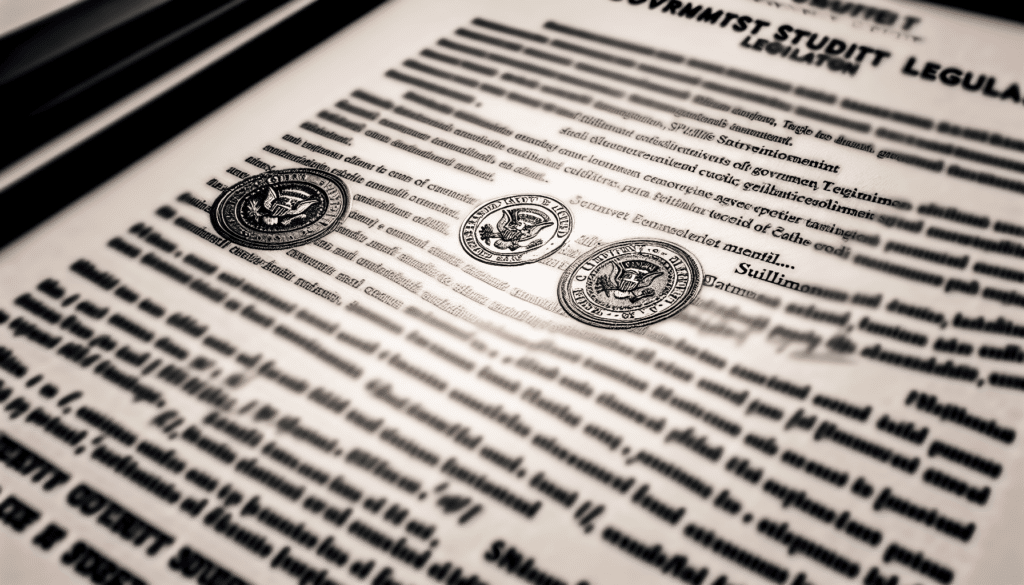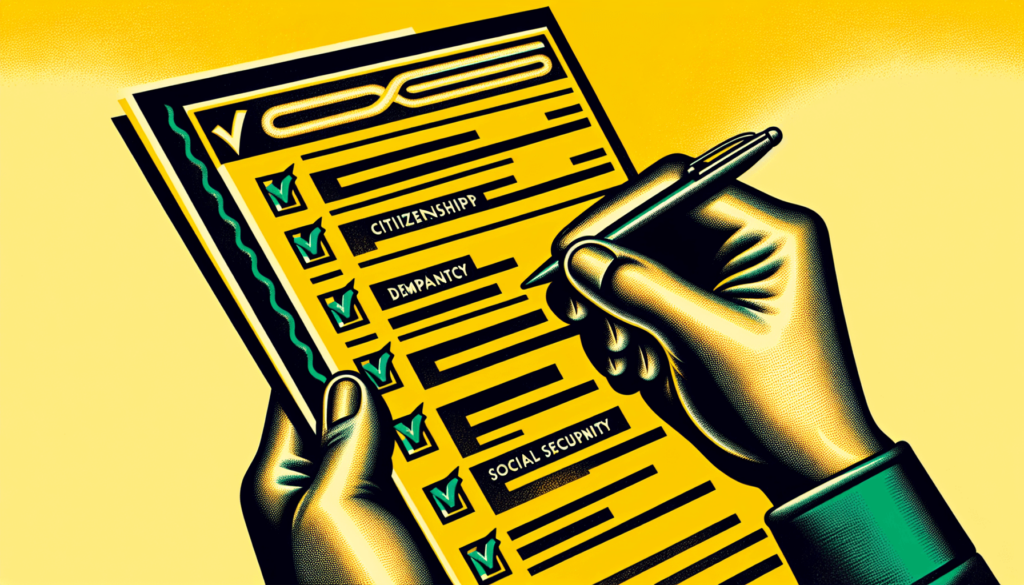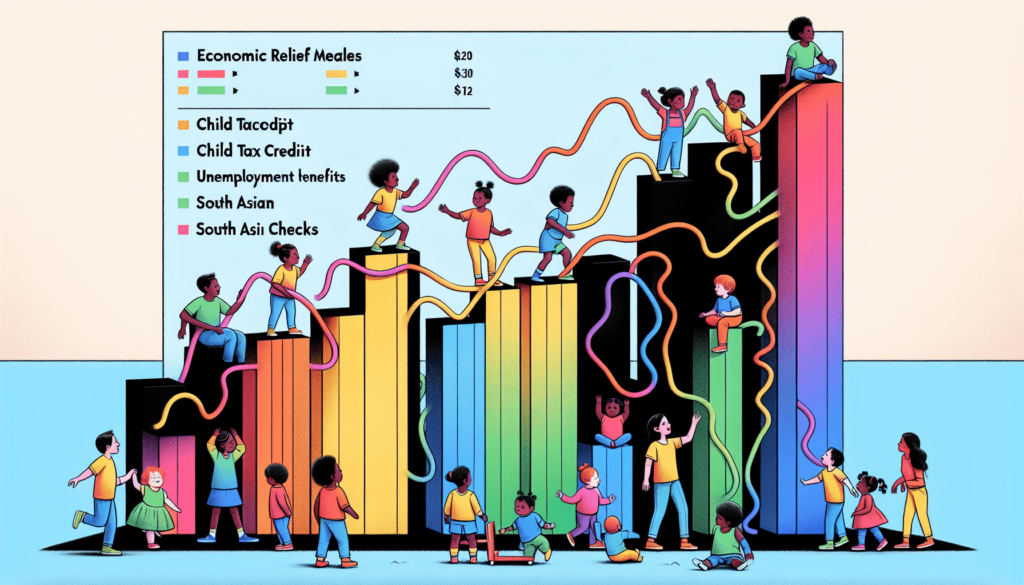The government stimulus credit has offered a financial lifeline during economic downturns, such as the COVID-19 pandemic. Find out if you’re eligible for this crucial aid, how to apply, and the ways in which it can bolster your finances. This article sheds light on the essentials, helping you navigate the process and maximize your benefits without the jargon.
Key Takeaways
- The Government introduced the Stimulus Credit to provide financial relief during economic downturns, especially in response to the COVID-19 pandemic, authorizing several rounds of payments through acts such as the CARES Act and the American Rescue Plan Act of 2021.
- Eligibility for the stimulus credit is based on factors like U.S. citizenship or resident alien status, having a valid Social Security number, and income levels, with the full Economic Impact Payment amount phasing out at specified AGI thresholds.
- To claim the Recovery Rebate Credit, taxpayers must reconcile their third Economic Impact Payment with the total eligible credit amount on their tax return, utilizing tools such as IRS Free File and their IRS Online Account for accurate filing.
Understanding the Government Stimulus Credit

Also known as the Economic Impact Payment, the Government Stimulus Credit was conceived to support individuals and businesses during economic downturns by injecting cash into the economy. The primary purpose of the credit is to provide financial relief to those facing economic hardship, especially during challenging times like the COVID-19 pandemic.
The first large-scale deployment of the Government Stimulus Credit was through the following acts:
- Coronavirus Aid, Relief, and Economic Security (CARES) Act, signed into law in March 2020
- Consolidated Appropriations Act, 2021
- $1.9 trillion American Rescue Plan Act of 2021
These acts were implemented to continue economic support during the pandemic.
Economic Impact Payments: An Overview
Federal legislation authorized Economic Impact Payments as financial support for individuals and families amidst the COVID-19 pandemic. The first round of the Economic Impact Payment provided a significant relief of $2,400 for married couples.
The third round of the Economic Impact Payment brought more relief, including $1,400 for single individuals, $2,800 for married couples filing jointly, and an additional $1,400 for each dependent. These funds provided a much-needed cushion for millions of households grappling with the economic fallout of the pandemic.
The Role of Recovery Rebate Credit
For the 2020 tax year, the federal government made the Recovery Rebate Credit a key component of its economic response to the COVID-19 pandemic. This credit aimed to assist individuals who did not receive the first and second Economic Impact Payments or received less than the full amounts. It required them to file or amend a 2020 tax return to claim the Recovery Rebate Credit.
The credit is refundable and can result in either a reduction of tax liability or an addition to the tax refund for those eligible. It includes special considerations, such as allowing a deceased individual to still claim the credit on their final tax return, as well as adjustments for taxpayers who had changes in income or additional dependents.
Eligibility Criteria for Claiming the Stimulus Credit

Eligible individuals must meet certain criteria to qualify for the stimulus credit, including:
- Being U.S. citizens or resident aliens
- Not being claimed as dependents on another person’s tax return
- Having a Social Security number valid for employment
For the 2021 Recovery Rebate Credit, generally, individuals who were not dependents of another taxpayer and had a valid Social Security number were eligible. This includes those able to claim dependents with a valid SSN or Adoption Taxpayer Identification Number (ATIN).
However, there are some exclusions to this eligibility. Estates and trusts, as well as individuals who died before January 1, 2021, were not eligible for the 2021 Recovery Rebate Credit. To be eligible for the Economic Impact Payment, individuals must have filed a tax return for tax years 2018 or 2019, or be recipients of Social Security retirement, survivor or disability benefits, Railroad Retirement benefits, Supplemental Security Income, or Veterans Affairs benefits.
Adjusted Gross Income Parameters
Eligibility for stimulus credit amounts largely hinges on your Adjusted Gross Income (AGI). The full Economic Impact Payment starts to reduce at an AGI of $75,000 for single or married filing separately, $112,500 for heads of household, and $150,000 for married couples filing jointly.
Taxpayers become ineligible for the credit when their AGI reaches at least $80,000 for single filers, $120,000 for heads of household, and $160,000 for married couples filing jointly. The stimulus credit starts with a base amount of $1,400 for individuals and $2,800 for married couples, with a gradual reduction for higher income brackets.
Exclusions from Eligibility
Despite the design of the stimulus credit for inclusivity, certain exclusions apply. For instance, the law does not make nonresident aliens eligible for the stimulus credit. Similarly, the law excludes individuals without a valid Social Security number issued by the due date of their tax return from the stimulus credit.
Other exclusions cover individuals claimed as a dependent on another person’s tax return, such as on a 2021 tax return, who cannot claim the Recovery Rebate Credit. Also, married individuals filing jointly where one spouse has an ITIN are ineligible for the payment, except when one spouse serves in the U.S. Armed Forces.
How to Apply for the Recovery Rebate Credit

Individuals must reference the 2021 tax year information and adhere to the criteria of the third Economic Impact Payment to be eligible for the Recovery Rebate Credit. To calculate the Recovery Rebate Credit, subtract the amount of the third stimulus check and any ‘plus-up’ payments received from the total credit amount for which an individual is eligible.
Taxpayers who did not receive the full amount of the third Economic Impact Payment may claim the Recovery Rebate Credit on their federal tax return. To assist in accurately claiming the Recovery Rebate Credit, tax software such as the IRS Free File Program for those with an income of $73,000 or less can be utilized.
Individuals can check their IRS online account, provided by the Internal Revenue Service, under the ‘Economic Impact Payment Information’ section for their past Economic Impact Payment amounts to aid in the Recovery Rebate Credit calculation.
Filing Taxes to Receive Your Credit
Non-filers and individuals who didn’t file a 2020 tax return or use the Child Tax Credit Non-filer Sign-up Tool must submit a 2020 tax return to claim the Recovery Rebate Credit. There are specific deadlines to be aware of when claiming these credits. The deadline to claim the 2020 Recovery Rebate Credit is May 17, 2024, and the deadline for the 2021 credit is April 15, 2025; taxpayers need to be aware of the total amount of their third Economic Impact Payments and any plus-up payments to accurately calculate the credit.
If the IRS corrects the credit amount on an individual’s tax return, the taxpayer will receive an explanation and should not file a second tax return, as this may cause further processing delays.
Direct Deposit and Payment Methods
Taxpayers have several options for receiving their tax refund and stimulus credit. They can have their tax refund and stimulus credit directly deposited into their financial account, which is the fastest and most secure way to receive the funds. Direct deposit can be set up through tax software by entering the account number and routing number, or by informing a tax preparer of the desire for direct deposit.
You can also use prepaid debit cards with account and routing numbers to receive tax refunds and stimulus credits via direct deposit. Some mobile apps and prepaid debit cards facilitate the direct deposit of tax refunds and require associated routing and account numbers that you can enter on a tax return. However, you can receive a maximum of three electronic refunds per single financial account or prepaid debit card; exceeding this limit will prompt an IRS notice and result in a paper refund.
Navigating Child Tax Credits and Additional Benefits

Beyond the Government Stimulus Credit, other significant benefits like the expanded Child Tax Credit under the American Rescue Plan exist, which significantly reduced child poverty in 2021. Studies and real-world evidence indicate that the expanded Child Tax Credit did not have a significant effect on parental employment.
The Child Tax Credit provided immediate relief from hardship and long-term gains in children’s health, education, and earnings. This extended support has been a boon for families across the nation, providing much-needed relief in challenging times.
Understanding Expanded Child Tax Credit Provisions
The expanded U.S. Child Tax Credit in 2021 offered substantial financial relief, providing $3,600 for children under age 6 and $3,000 for children aged 6 to 17. To receive the additional $500 per child, the child must meet specific criteria including being a U.S. citizen, permanent resident, or qualifying resident alien under the age of 17 with a valid SSN or an ATIN.
This expansion of the Child Tax Credit marked a key shift in the government’s approach to combating child poverty and providing support to families in need.
Additional Economic Relief Measures
Beyond the Government Stimulus Credit and the expanded Child Tax Credit, there are several other economic relief measures that have been introduced. The CARES Act initiated enhanced unemployment benefits that played a crucial role in stabilizing the economy by supporting consumer demand during the pandemic’s downturn. These federal pandemic unemployment programs, including a $600 weekly supplement (later $300) under FPUC, extended benefits to gig workers and others via PUA, and additional weeks of benefits through PEUC, significantly reduced hardship for Americans.
These benefits reduced food hardship, helped individuals maintain housing payments, improved mental health outcomes, contributed to fewer deaths, and lifted 5 million people above the poverty line, particularly benefiting Black individuals. Further, the American Rescue Plan and Inflation Reduction Act dramatically reduced health insurance premiums through additional premium tax credits, extending eligibility through 2025 and enabling more low-cost enrollments to improve health care access.
Tools and Resources for Tracking Your Stimulus Payment

For the first, second, and third stimulus payments, the IRS has issued several notices related to Economic Impact Payments including:
- Notice 1444
- Notice 1444-B
- Notice 1444-C
- Letter 6475 (for the third payment and any plus-up payments received in the tax year 2021)
Having these tools and resources at your disposal can help track your stimulus payments and understand the breakdown of your federal benefits.
IRS Issued Guidelines and Assistance
The IRS has issued guidelines that taxpayers should follow when claiming their Recovery Rebate Credit. For instance, if the IRS has not processed their 2020 return or related information, taxpayers should not file a second tax return; instead, they should wait for the IRS to apply special handling, which may delay processing when corrections are necessary.
If the IRS finds a discrepancy between the taxpayer’s claimed credit amount and their records, they will adjust the recovery rebate credit amount and provide an explanation, possibly delaying tax return processing. In the event of receiving an IRS letter about the Recovery Rebate Credit, taxpayers should save the letter with their tax records and must call the IRS if they disagree with any adjustments made.
Taxpayers can confirm the receipt of their Economic Impact Payments by accessing their IRS Online Account, which displays the total payment amounts received, as facilitated by the Treasury Department.
Checking Payment Status Online
Taxpayers seeking to verify the receipt of their third-round Economic Impact Payment, including any advance payments, should cross-check their bank account records and review IRS notices like Notice 1444-C or Letter 6475. In cases of missing or incorrect third-round payments, taxpayers should contact the IRS and may need to initiate a payment trace, particularly if they have indications a payment was issued but not received as shown in their IRS Online Account.
While the ‘Get My Payment’ tool is no longer in service, taxpayers can check the amount of their Economic Impact Payments via their IRS Online Account or by referring to mailed IRS notices instead. With these resources, tracking your stimulus payment becomes a smooth and hassle-free process.
Summary
In conclusion, the Government Stimulus Credit, along with the expanded Child Tax Credit and other economic relief measures, have provided significant financial support to millions of Americans during the COVID-19 pandemic. Understanding these measures, how to claim them, and how to track them can help maximize their benefits. With the right knowledge and resources, you can navigate these provisions effectively and ensure you’re receiving the financial support you’re entitled to.
Frequently Asked Questions
Alabama, Arizona, and Virginia are sending out one-time tax rebates in the final months of 2023, while most states have concluded their stimulus check-style payments last year.
You can track your stimulus check using the IRS Get My Payment tool, an online portal designed to help Americans manage and monitor their Economic Impact Payments.
Individuals with adjusted gross income up to $75,000, heads of household with income up to $112,500, and married couples filing jointly with income up to $150,000 qualify for the recent stimulus. The payment amount reduces for those with income above these thresholds.
The Government Stimulus Credit, also known as the Economic Impact Payment, is a financial relief measure intended to provide support to individuals and businesses during economic downturns by injecting cash into the economy.
To calculate the Recovery Rebate Credit, subtract the amount of the third stimulus check and any ‘plus-up’ payments received from your total eligible credit amount.








